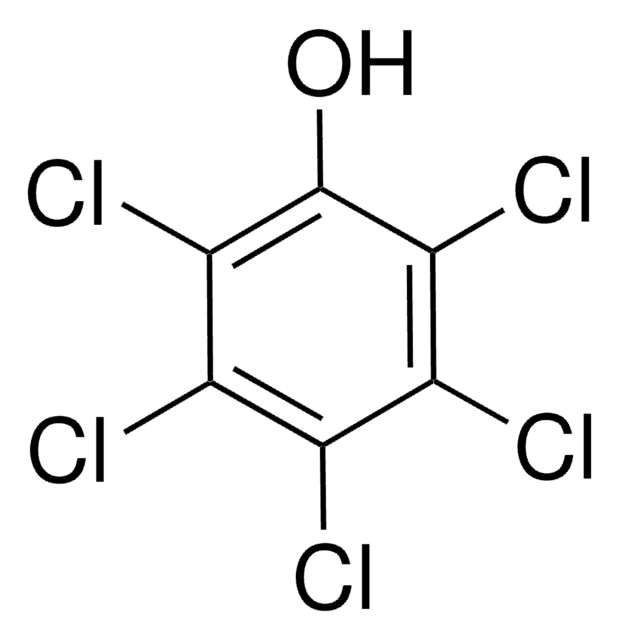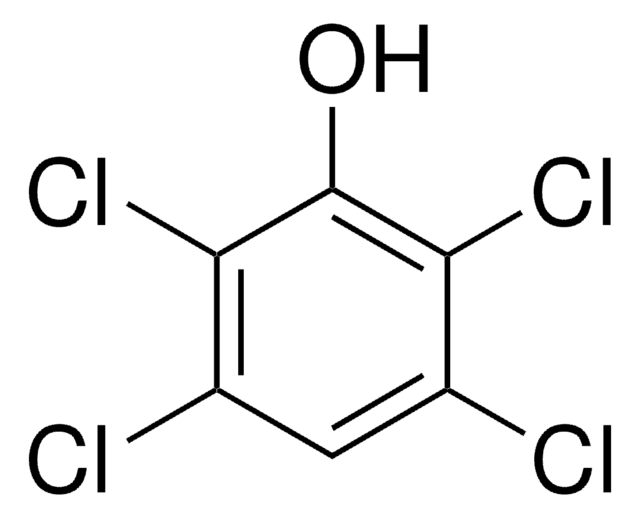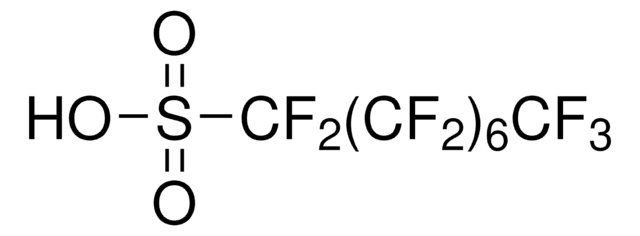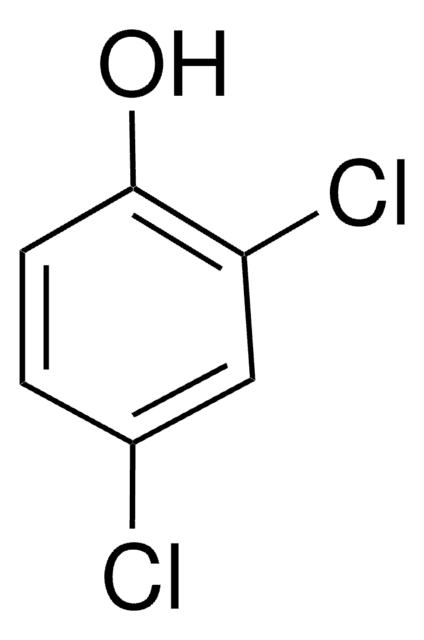P2604
Pentachlorophenol
97%
Sinonimo/i:
1-Hydroxy-2,3,4,5,6-pentachlorobenzene, 1-Hydroxypentachlorobenzene, 2,3,4,5,6-Pentachlorophenol
About This Item
Prodotti consigliati
Densità del vapore
9.2 (vs air)
Livello qualitativo
Tensione di vapore
40 mmHg ( 211.2 °C)
Saggio
97%
Forma fisica
powder or chunks
P. eboll.
310 °C (lit.)
Punto di fusione
165-180 °C (lit.)
Densità
1.978 g/mL at 25 °C (lit.)
Stringa SMILE
Oc1c(Cl)c(Cl)c(Cl)c(Cl)c1Cl
InChI
1S/C6HCl5O/c7-1-2(8)4(10)6(12)5(11)3(1)9/h12H
IZUPBVBPLAPZRR-UHFFFAOYSA-N
Cerchi prodotti simili? Visita Guida al confronto tra prodotti
Categorie correlate
Avvertenze
Danger
Indicazioni di pericolo
Classi di pericolo
Acute Tox. 2 Inhalation - Acute Tox. 3 Dermal - Acute Tox. 3 Oral - Aquatic Acute 1 - Aquatic Chronic 1 - Carc. 2 - Eye Irrit. 2 - Skin Irrit. 2 - STOT SE 3
Organi bersaglio
Respiratory system
Codice della classe di stoccaggio
6.1A - Combustible acute toxic Cat. 1 and 2 / very toxic hazardous materials
Classe di pericolosità dell'acqua (WGK)
WGK 3
Scegli una delle versioni più recenti:
Possiedi già questo prodotto?
I documenti relativi ai prodotti acquistati recentemente sono disponibili nell’Archivio dei documenti.
I clienti hanno visto anche
Il team dei nostri ricercatori vanta grande esperienza in tutte le aree della ricerca quali Life Science, scienza dei materiali, sintesi chimica, cromatografia, discipline analitiche, ecc..
Contatta l'Assistenza Tecnica.










